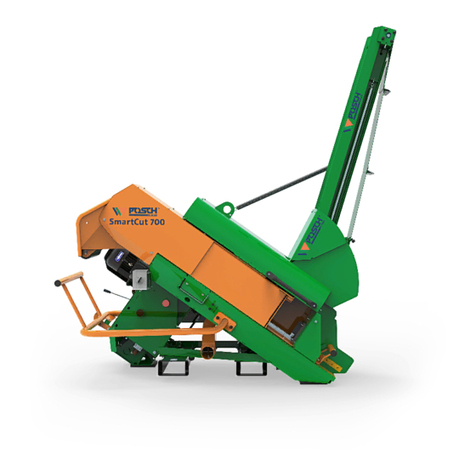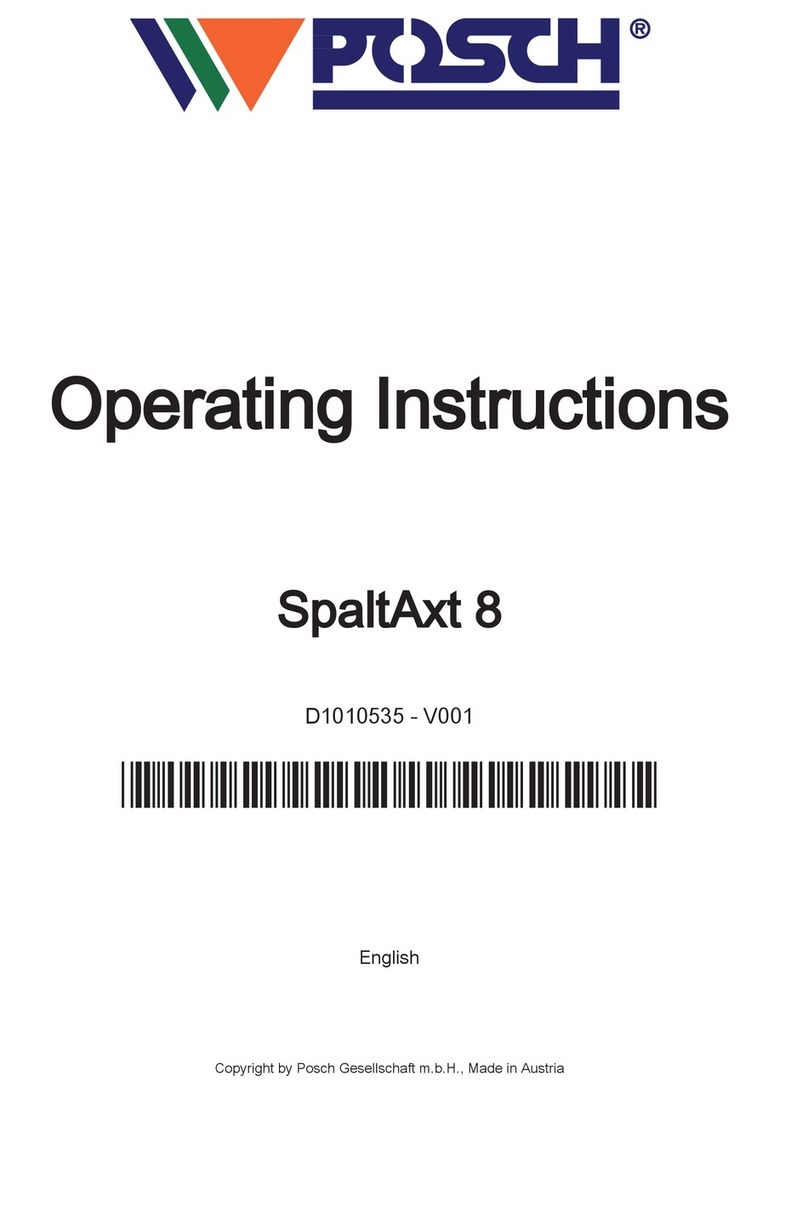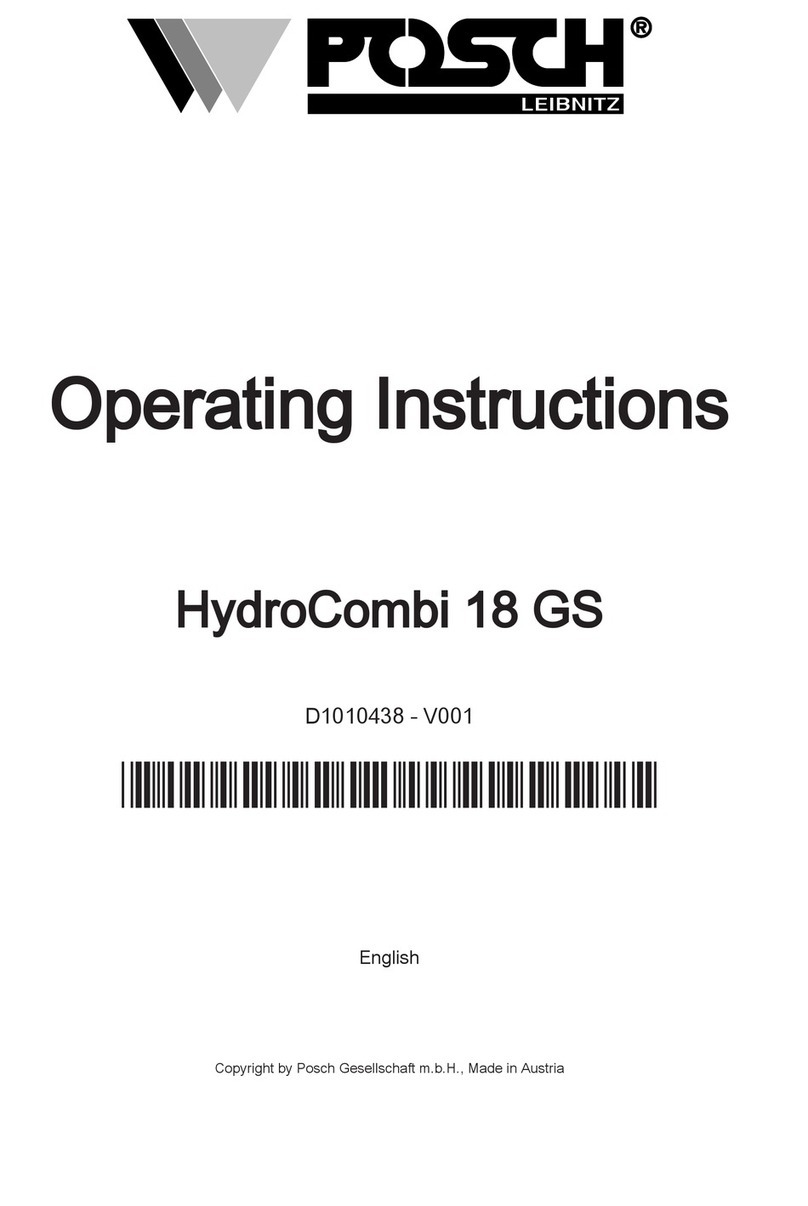
Only use original - POSCH - spare parts.
Do not modify or tamper with the machine.
Work on electrical equipment must only be carried out by qualified electricians.
Never use damaged cables.
Machines with electric motors must not be used in the rain as this can lead to a malfunction
of the switch or the motor.
Safety instructions for cut-splitters
Prior to starting up the machine, the machine operator must agree the safety provisions with
the operator for wood manipulation (crane, forklift, front-end loader, etc.) and must observe
these safety provisions and the safety instructions from the wood manipulation operator.
▪ This may mean that the machine operator is required to leave the place of operation
while the wood feed is loaded, in order to comply with the necessary safety distances.
These measures must be observed irrespective of how the wood feed takes place (roller,
chain, cross or step conveyor), for both stationary and mobile use.
Do not hold the log in your hand while sawing.
Do not remove offcuts or other parts of the workpiece from the cutting area while the
machine is running.
Never reach towards the rotating saw blade with gloves.
Only use the machine outdoors.
▪ Should the machine be used indoors, however, a local extractor unit (extraction at
source) is required.
The machine must always be properly maintained and must be kept free of waste material
such as chips and sawn-off pieces of wood.
Wear goggles or a face mask while working.
Use respiratory protection to reduce the risk of inhaling harmful dust.
Wear safety shoes and close-fitting clothes when working with this device.
Only use saw blades that are designed to reduce noise.
Do not use damaged or deformed saw blades.
Minimum saw blade
diameter Maximum saw blade
diameter Bore
990 mm 1,000 mm 50 mm
Only saw blades conforming to the EN 847-1 standard may be used.
When turning off the machine, always be careful of the tool runout until the machine has
come to a standstill.
The working pressure of the hydraulic system must not exceed 230 bar.
Safety instructions for conveyor belts
Keep clear of the danger zone.
It must be expected that material will be ejected at high speed to any position within this
area.
Never reach into the hopper or touch the conveyor belt when the machine is running.
Shut the drive down before removing any jammed pieces of wood.
The machine must not be started up without a conveyor belt (must be fitted) as an item of
protective equipment separating it from the splitting area (in line with EN ISO 13857-1).
2.3
2.4
Safety information
9






























